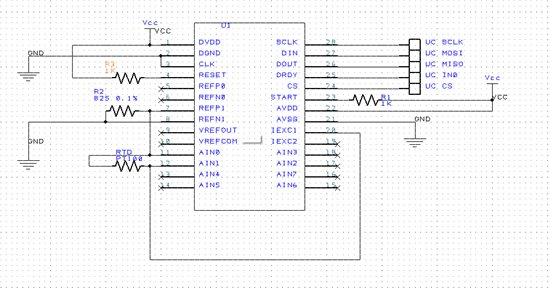I am trying to get an ADS1248 to talk SPI to a Piccolo to read a 4 wire RTD. I have the SPI communicating and I am able to setup the control registers but I am having a problem with getting a stable reference input. I have it wired the same as the example in the app note http://www.ti.com/lit/an/sbaa180/sbaa180.pdf?DCMP=hpa_contriubted_article&HQS=sbaa180-ca. I have the ADS1248 configures to output 1 mA on IEXC 1 and 2 and use REF0 as reference. Internal reference is on to activate IDAC current.
Before connecting anything to REF0N and REF0P I already have a voltage differential on the reference while CS is high (3.3V). This voltage differential drops to 0 when CS goes low. When I connect the bias resistor and rtd as the app note shows, I get an offset to the reference with a dip in it when CS goes low. This also seems to have an effect on the excitation current after a period of time, the current drops over time for some reason. Eventually this current will drop to zero and the ADS1248 will stop responding to all commands.



